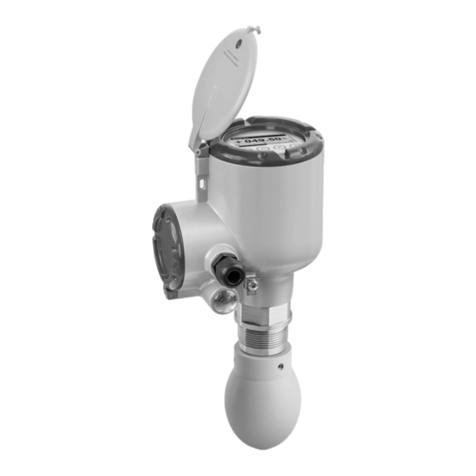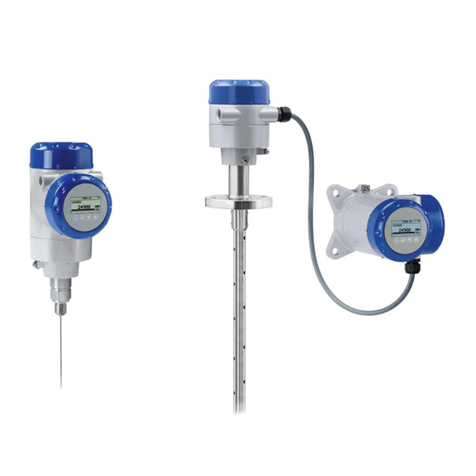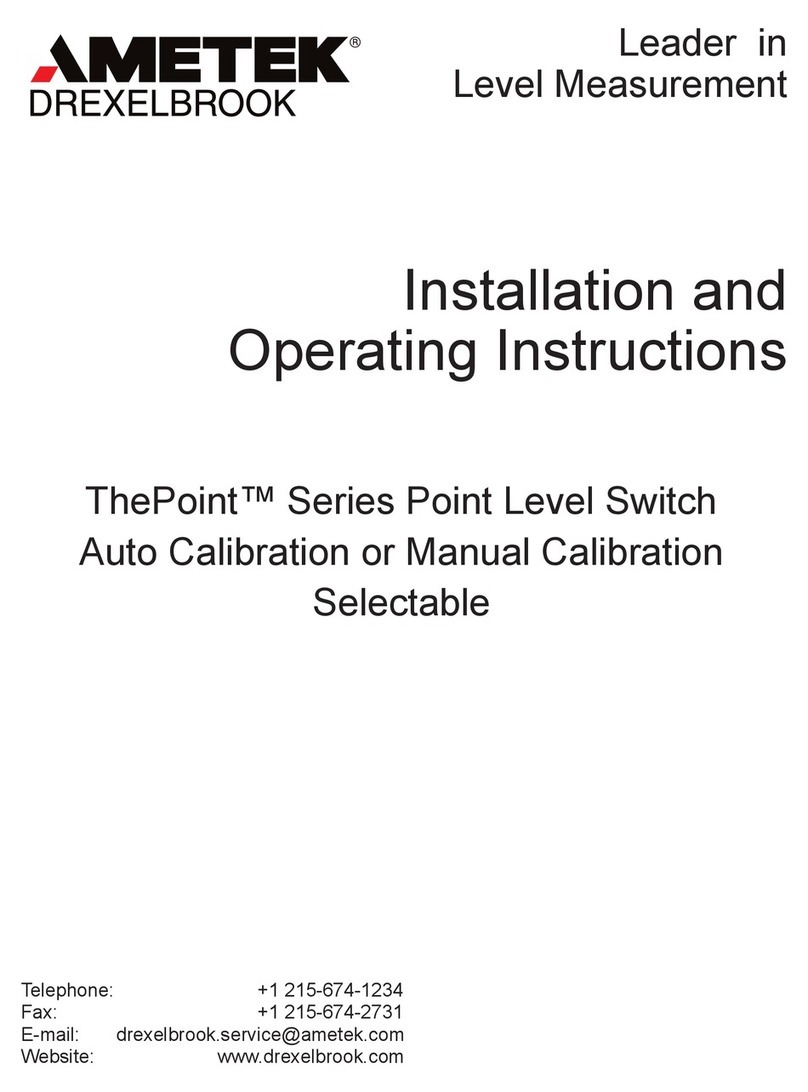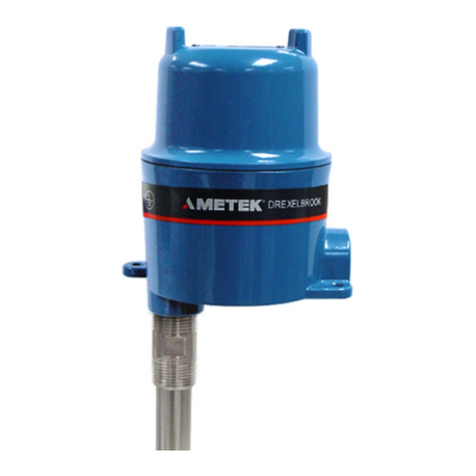
CONTENTS
2
www.drexelbrook.comDR7000-LM IECEX, EDO# 9-10-104, Issue# 1
DR7000 SERIES
1 General safety information 4
1.1 Scope of the document..................................................................................................... 4
1.2 Device description ............................................................................................................ 4
1.3 Standards and approvals.................................................................................................. 4
1.4 Equipment protection levels (EPL)................................................................................... 5
1.4.1 Ex ia / Ex iaD-approved devices.............................................................................................. 5
1.4.2 Ex d[ia] / Ex tD[iaD]-approved devices ................................................................................... 5
1.4.3 Definitions of equipment protection levels ............................................................................ 5
1.5 IECEx nameplate .............................................................................................................. 6
2 Installation 7
2.1 Precautions....................................................................................................................... 7
2.1.1 General notes.......................................................................................................................... 7
2.1.2 Electrostatic discharge........................................................................................................... 7
2.1.3 Special conditions ................................................................................................................... 8
2.1.4 Optional purging system......................................................................................................... 8
2.2 Operating conditions ........................................................................................................ 9
2.2.1 Ambient and flange temperature ...........................................................................................9
2.2.2 Maximum surface temperature of the housing ................................................................... 11
2.2.3 Process pressure.................................................................................................................. 11
3 Electrical connections 12
3.1 General notes ................................................................................................................. 12
3.2 Terminal compartment .................................................................................................. 12
3.2.1 How to open the terminal compartment .............................................................................. 12
3.2.2 How to close the terminal compartment ............................................................................. 13
3.3 Terminal tightening capacity.......................................................................................... 13
3.4 Equipotential bonding system........................................................................................ 13
3.5 Ex ia / Ex iaD equipment................................................................................................. 13
3.5.1 How to connect the electrical cables ................................................................................... 13
3.5.2 Maximum intrinsically-safe values for the electrical circuit............................................... 14
3.5.3 Supply voltage ....................................................................................................................... 14
3.5.4 Electrical schema ................................................................................................................. 14
3.6 Ex d[ia] / Ex tD[iaD] equipment ...................................................................................... 15
3.6.1 General notes........................................................................................................................ 15
3.6.2 How to connect the electrical cables ................................................................................... 15
3.6.3 Supply voltage ....................................................................................................................... 16
3.6.4 Electrical schema ................................................................................................................. 16
4 Start-up 17































